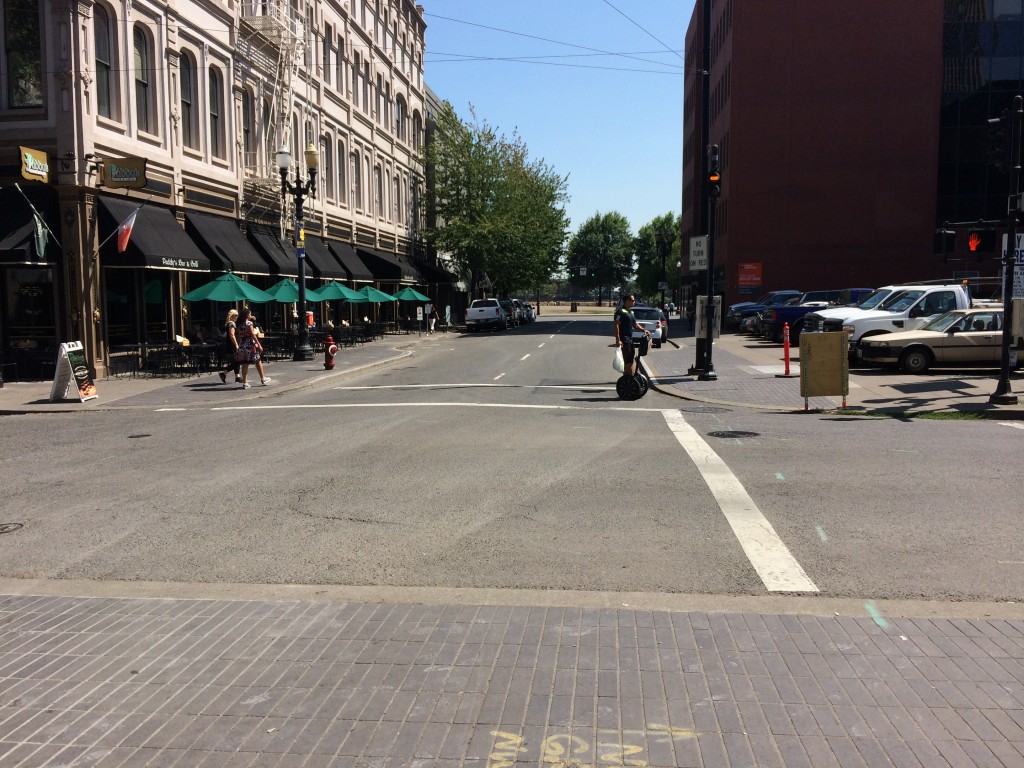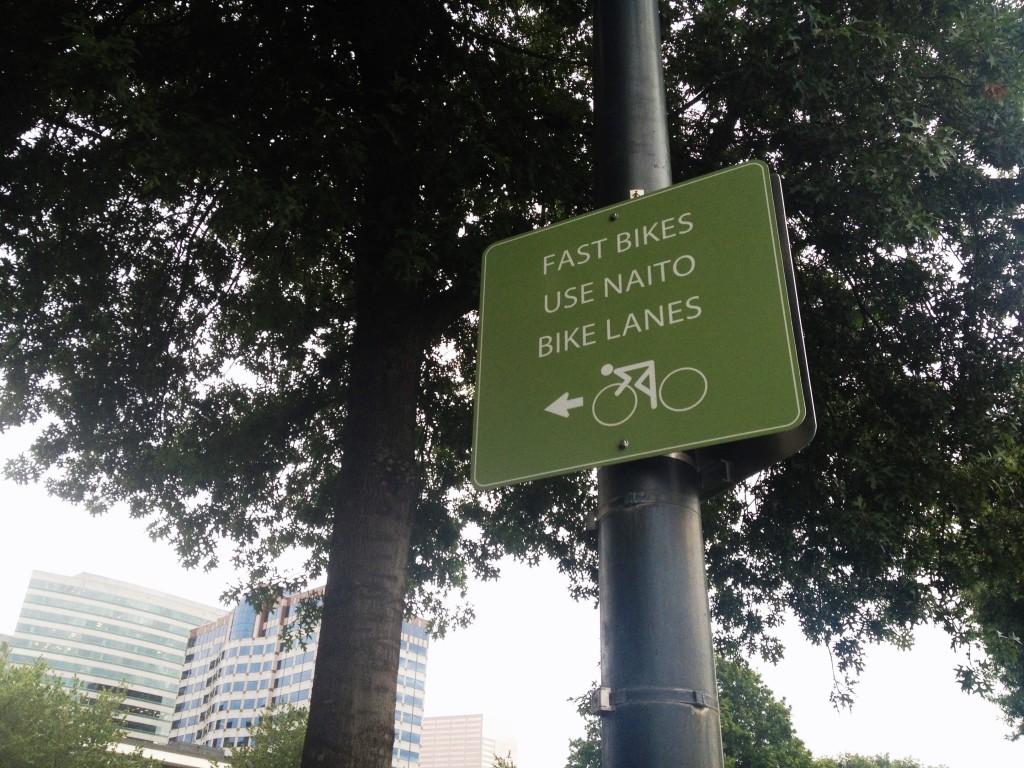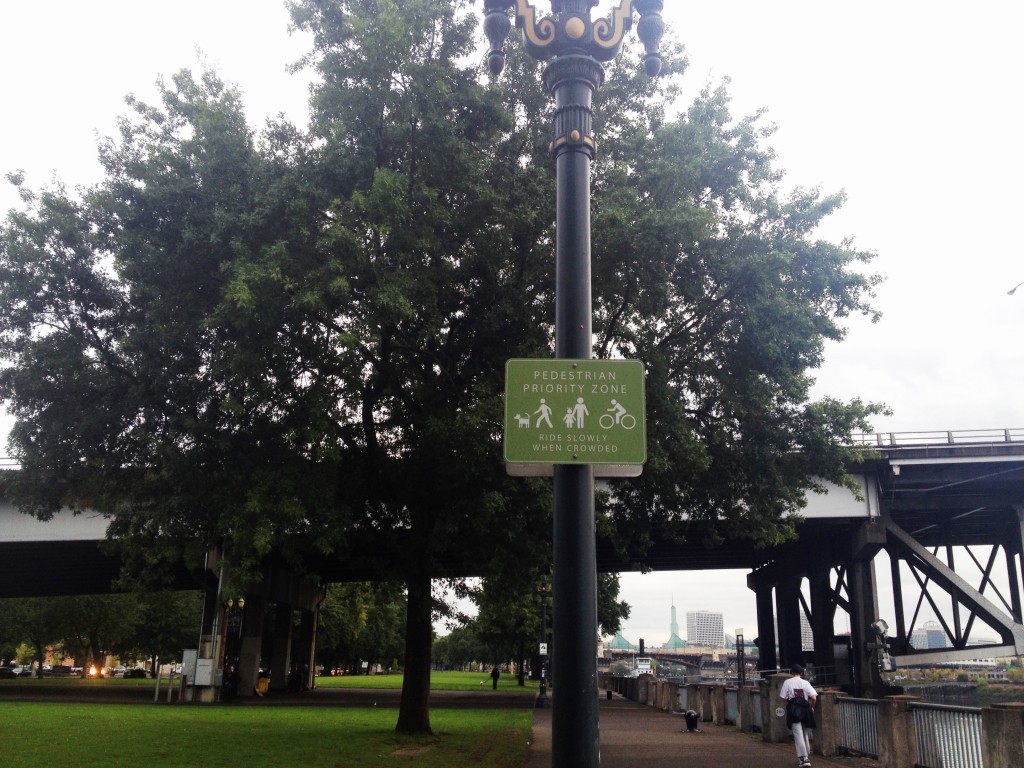One of the more unique sights in Downtown Portland are the Segway tour groups, of which there is not one but two different outfits: Portland by Segway and Portland Segway Nation Tours. There are also individuals who use the devices for transportation and recreation.
A Segway is not called a Segway in the law. It is called an Electric Personal Assistive Mobility Device and this covers not only the name brand Segway but also the other types of devices made by Honda and others. I will use EPAMD as short hand. To be considered an EPAMD, a device must be self balancing with two non-tandem (i.e. no front and rear wheel) wheels, designed to only transport one person in a standing position, have an electric drive, and a maximum speed of 15 MPH.
EPAMDs are vehicles under Oregon law. They are not, however, motor vehicles and this is specifically noted in the law. This is an important distinction when reading the Oregon Vehicle Code to determine which laws apply to EPAMD operators. Even though EPAMDs are not motor vehicles, Oregon requires operators to be 16 years old or older. An operator does not need a valid driver’s license, though.
EPAMDs, depending on where they are operated, fall under either bicycle laws or pedestrian laws, as well as a set of requirements specific to them.
If a person is operating an EPAMD on a sidewalk they are subject to the same laws as a pedestrian, but also have the same rights, like crossing at a crosswalk. However, like bicycles on sidewalks, their operators are subject to additional responsibilities beyond those of pedestrians:
• An EPAMD operator cannot operate on a sidewalk in a careless manner that endangers or would likely to endanger any person or property (remember that this includes the operator).
• When an EPAMD in operating on the sidewalk and approaching and entering a crosswalk, driveway, curb-cut, or a pedestrian ramp an operator of a EPAMD must slow to the speed of an ordinary walk.
• When passing pedestrians on a sidewalk an EPAMD operator must give an audible signal.
• An EPAMD must yield the right of way to all pedestrians on the sidewalk.
One misunderstanding of the law that I hear quite often in Portland is that the EPAMDs are not allowed to operate on sidewalks in the downtown core. This is not correct. Bicycles, scooters, and skateboards are prohibited from the sidewalks in Downtown Portland but EPAMDs are not addressed in the city code. The state does allow cities to prohibit them, but Portland has not taken the step to do so.
EPAMDs do not have all of the same rights as bicyclists when operating on the road. The biggest difference is that an EPAMD is not allowed to operate on a road with a speed limit above 35 MPH unless there is a bicycle lane (or they are crossing the road). EPAMDs are allowed to be operated in the bicycle lane, on bicycle paths, and on roads with posted speeds under 35 MPH. In such circumstances EPAMD operators are subject to the same rights and responsibilities as bicycle operators, including having the right-of-way in the bicycle lane.
EPAMDs also have specific requirements and restrictions:
• An EPAMD cannot carry more than one person.
• An EPAMD must have lighting in limited visibility conditions, including a white front light visible from 500 feet and a rear red reflector or light visible from 600 feet.
• A person cannot install a siren or whistle on an EPAMD.
Since EPAMD operators are subject to the same laws as bicycle operators when in bicycle lanes, that covers the helmet law, which requires operators under the age of 16 to wear a helmet. However, this is moot since operators must be 16 or older to legally operate an EPAMD.



